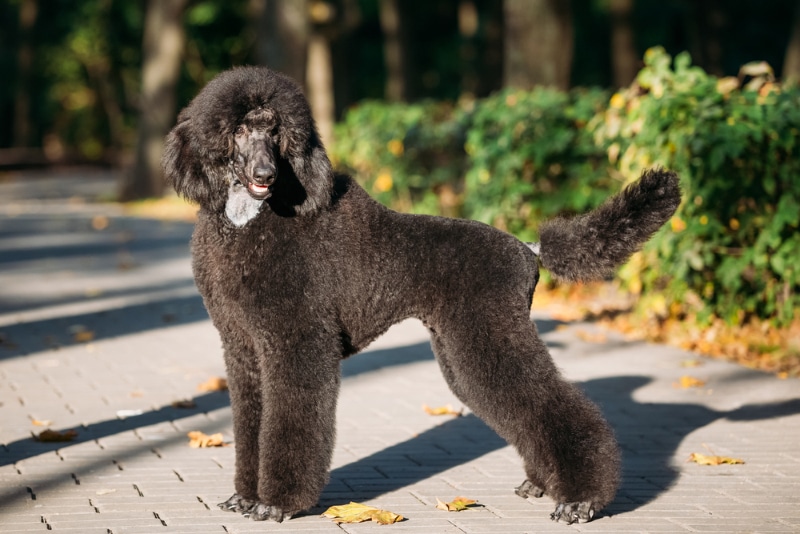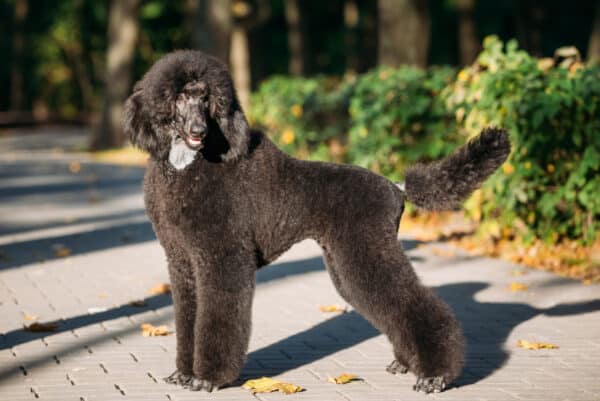While no dog is truly hypoallergenic, numerous breeds have appeared over the centuries that have provided some sensitive individuals an opportunity for irritation-free pet ownership.
“Hypoallergenic” breeds today come in all sizes and from every walk of life; so you will likely be able to find a breed that suits your preferences and lifestyle. However, as discussed below, a hypoallergenic breed does not provide any guarantees to allergy sufferers and we recommend speaking with a doctor, or at least spending some time with the breed, before making the commitment to dog ownership.

How Are Hypoallergenic Dog Breeds Classified?
Hypoallergenic dogs are generally low-shedding, though that doesn’t mean they’re allergen-free. While most allergy sufferers experience fewer signs with a “hypoallergenic” dog, they still produce the main proteins, or “antigens”, responsible for allergies, Can f 1 and Can f 2.
Hypoallergenic dogs cause fewer allergy symptoms because although they produce the same number of allergens, they don’t release them in shed fur. Allergens primarily appear in dog dander, hair, and saliva. As dogs shed, skin and hair float around the room, irritating anyone with a sensitivity that comes into contact with them.

The 22 Hypoallergenic Dog Breeds
1. Poodle
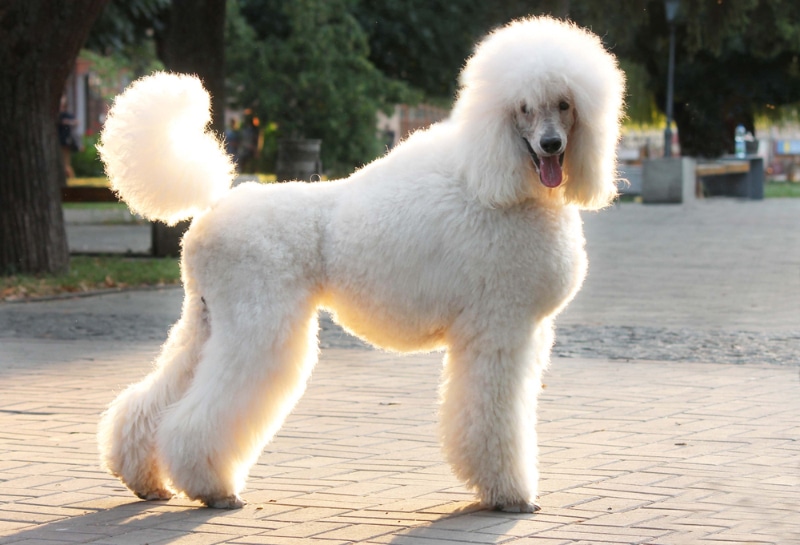
| Origin: | ~1400s–1500s, Germany |
| Lifespan: | 10–18 years |
| Height: | <10 – >15 inches (depending on size) |
The Poodle comes in three sizes; toy, miniature, and standard. They are prominent among hypoallergenic breeds and the foundation for the designer dog craze involving fashionable, often low-shedding crosses like Labradoodles, Bernedoodles, and Cavapoos.
Although their curly coats and fancy show cuts get most of the attention, they also bring intelligence and athleticism that make their hybrids more irresistible.
As a water retriever in its native Germany, the Poodle needed their smarts to make them trainable and their vigor to make them capable swimmers. The same traits made them adaptable in future roles as circus performers, guard dogs, military dogs, and service dogs. Appearing in toy, miniature, and standard varieties, Poodles are a suitable option for anyone wanting a hypoallergenic dog.
2. Afghan Hound
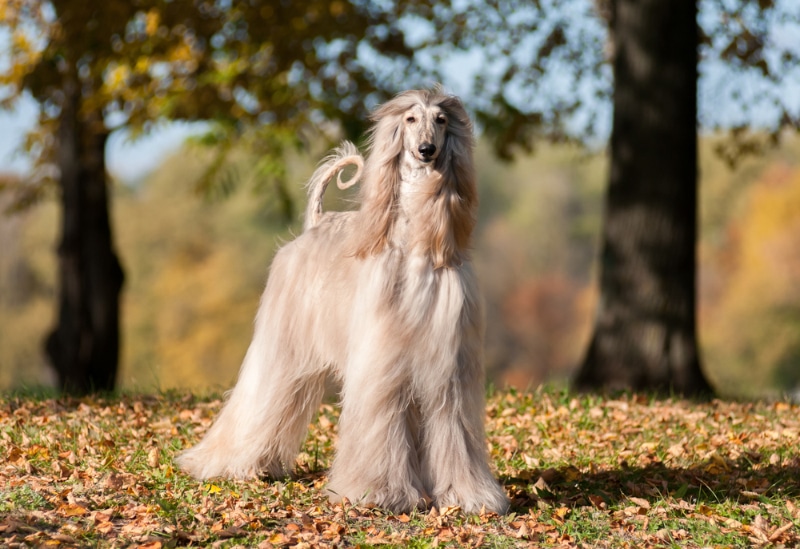
| Origin: | ~4000 B.C., Middle East |
| Lifespan: | 12–18 years |
| Height: | 25–27 inches |
The elegant look that makes the silky-haired Afghan Hound a showstopper in conformation also puts them among the top choices for allergy sufferers. They originated as hunting dogs and status symbols in the ancient Middle-East.
The Afghan Hound is an independent, high-energy, and aloof dog that requires a highly experienced owner to be obedient and socially well-mannered. Otherwise, the dignified air is apparent in their form, gait, and expression, and their glamorous nature is an essential part of the breed standard.
3. Airedale Terrier
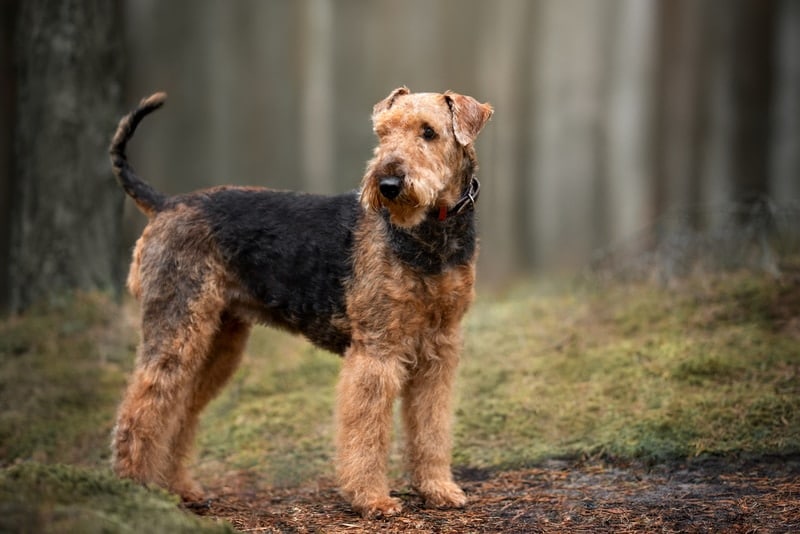
| Origin: | 1800s, England |
| Lifespan: | 11–14 years |
| Height: | 23 inches |
With all the Terrier scrappiness in an oversized body, the Airedale Terrier had much more to offer their blue-collar owners when they first appeared in the 19th century. The versatile workers made suitable guardians, hunters, companions, and, of course, vermin exterminators.
The “King of Terriers” transitioned into police and military work in the early 20th century. Since WWI, they have earned a heroic reputation, both on the battlefront and the homestead. They’re still a farm and ranch staple today and protect their owners and livelihood against threats.
4. Portuguese Water Dog
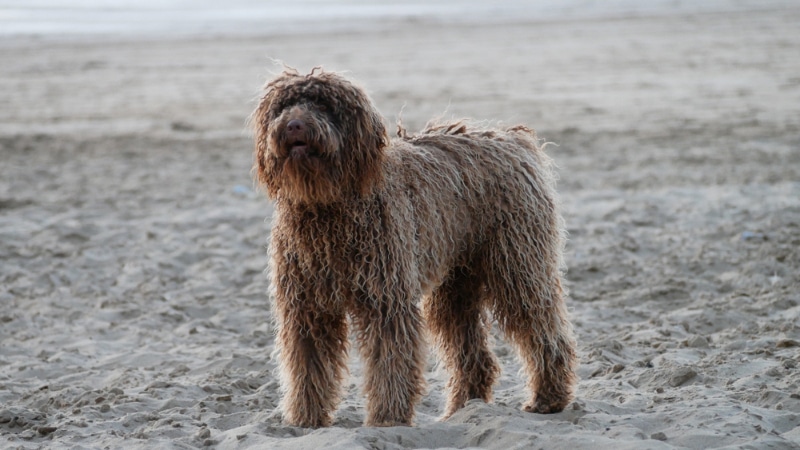
| Origin: | ~700 B.C.–400 A.D., Portugal |
| Lifespan: | 11–13 years |
| Height: | 17–23 inches |
The Portuguese Water Dog’s origin story and journey to Iberia is mysterious, but what is certain is their affinity for swimming. The double-coated waterproof dog was traditionally a fisherman’s aide, helping to corral fish and retrieve stock and equipment from the water.
The trainable, family-friendly dog is a playful yet protective companion. Recently, the Portuguese Water Dog made headlines as President Obama, after winning the election, adopted a puppy named Bo, picked because his daughter, Malia, needed a hypoallergenic breed.
5. Bergamasco
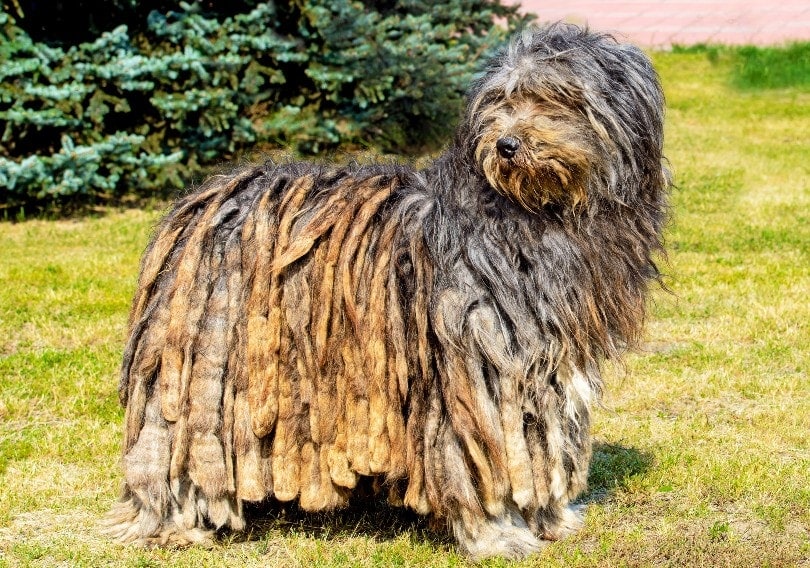
| Origin: | ~3000 B.C.–0 A.D., Italy |
| Lifespan: | 13–15 years |
| Height: | 22–23.5 inches |
The Bergamasco has a long lineage dating thousands of years to ancient Iran (called Persia at the time). As nomadic populations expanded and settled across Europe, the dogs found a new role as sheep tenders in the Italian Alps, where the modern breed took shape.
Bergamascos had to be bright and independent problem solvers yet still eager to please their shepherd. As pets, they are sweet, gentle, and protective. Among hypoallergenic breeds, the Bergamasco is also unique since they have a low-maintenance coat.
The coat of hair, fur, and wool requires close attention in the early years, but once the locks are set, brushing is not needed for the rest of their lives.
6. Kerry Blue Terrier
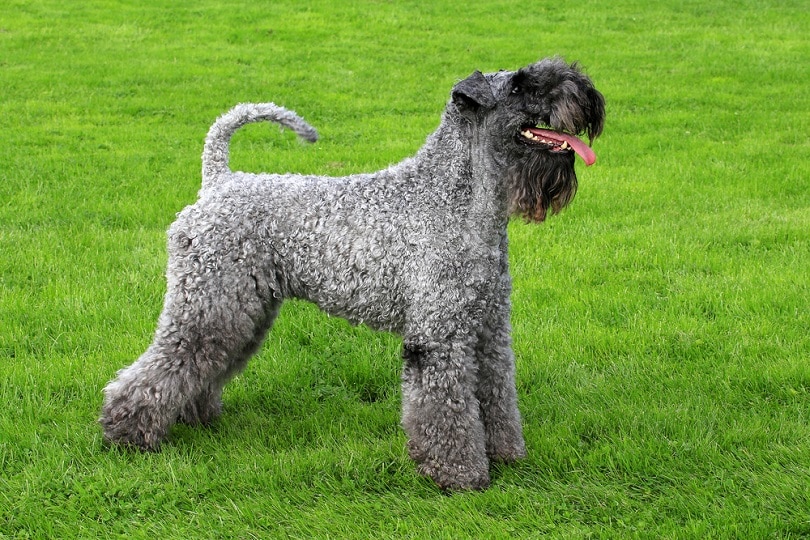
| Origin: | ~1500s–1600s, Ireland |
| Lifespan: | 12–15 years |
| Height: | 17.5–19.5 inches |
There is a legend that the Kerry Blue Terrier originated from the Spanish Armada of the 1500s. Many believe shipwrecks off the Irish coasts brought several new dogs to the Emerald Isle. They mated with the pre-existing Soft-Coated Wheaten Terriers, resulting in the ancestor of modern Kerry Blue Terriers.
Though striking in color and build, the Kerry Blue Terrier made a name for themselves through their versatility, keen instincts, and energetic determination as a worker. They’re bright, fast, and feisty.
Kerry Blue Terriers are popular pets and show dogs. Their well-groomed coats are recognized as much for their aesthetics as their hypoallergenic qualities.
7. Lagotto Romagnolo
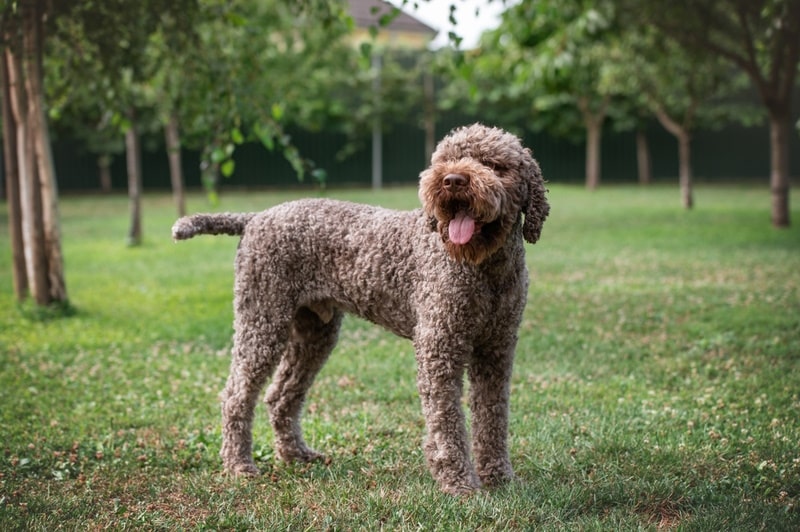
| Origin: | ~1600s, Italy |
| Lifespan: | 15–17 years |
| Height: | 16–19 inches |
The Lagotto Romagnolo likely evolved from small Etruscan dogs dating to roughly the 7th century B.C. The curly-haired water dog was originally a hunter’s helper, a marshland retriever, before transitioning to the unexpected role of truffle-hunter, using their sharp nose to sniff out valuable mushrooms.
Although they’re indispensable workers, Lagotto Romagnolos are best known today for their adorable looks. They’re bright, eager, outgoing, and playful, and the hardworking and hypoallergenic breed has become a much-beloved companion for active families.
8. Brussels Griffon (Wire-Haired)
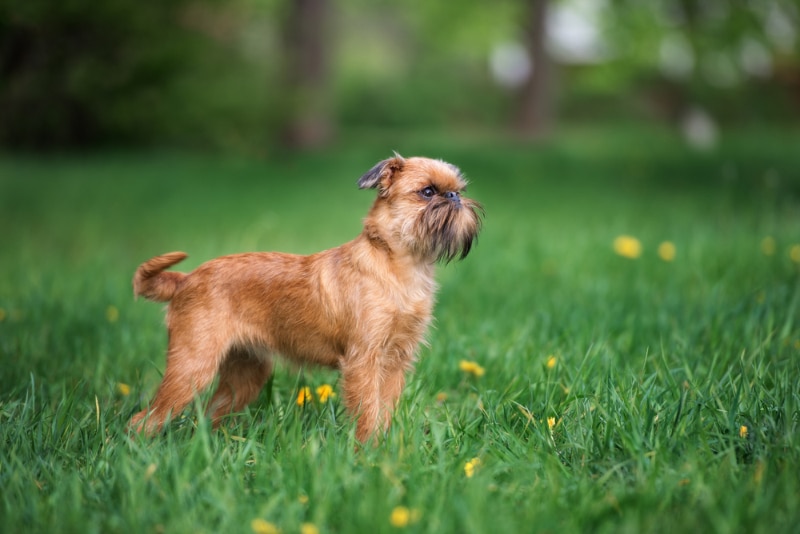
| Origin: | 1800s, Belgium |
| Lifespan: | 12–15 years |
| Height: | 7–10 inches |
The Brussels Griffon emerged in Brussels, Belgium, in the early 1800s from crosses of Pugs and English Toy Spaniels. Originally a ratter, the toy breed became a chic accessory for nobles and elites by the end of the 19th century.
Brussels Griffons can have either a rough coat or a smooth double coat. It’s a crucial distinction for allergy sufferers, as the wire-haired version is the only one considered hypoallergenic. With either variety, you can count on an alert, spunky, and ever-curious companion.
9. Coton de Tulear
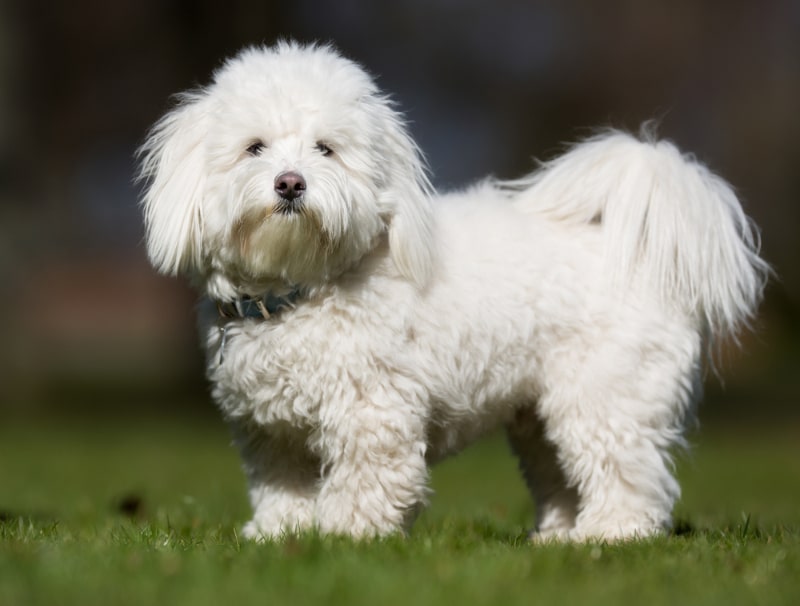
| Origin: | ~1400s, Madagascar |
| Lifespan: | 15–19 years |
| Height: | 9–11 inches |
Bichon-type dogs were well-traveled bartering aides and companions for centuries around the Mediterranean. New breeds would appear all over, each named for the isolated region where they took shape.
Although their history is unclear, a legend claims they finally made their way to Madagascar in the 15th century (possibly after surviving a shipwreck). After breeding with local dogs, they created the unique Coton de Tulear.
Cotons stayed hidden on their island until relatively recently and finally gained global awareness in the 1960s and ‘70s. Though they originated as sturdy wild dogs in Madagascar, they eventually became coveted companions for the island’s nobles and displayed the unique blend of humor, charm, and robust character seen in today’s dogs.
10. Lhasa Apso
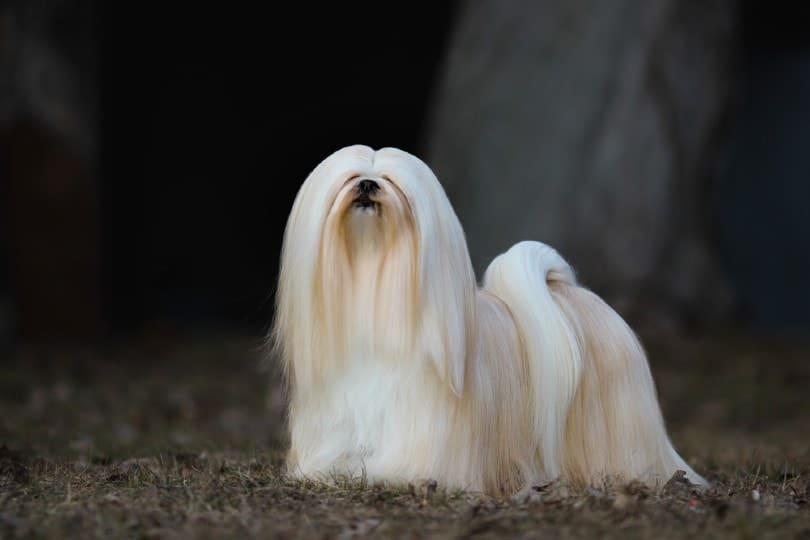
| Origin: | ~800 B.C., Tibet |
| Lifespan: | 12–15 years |
| Height: | 10–11 inches |
The Lhasa Apso is thought to have existed since 800 B.C. Though small, Tibetan monks relied on them for protection and companionship. They gave the dogs a spiritual significance, believing Lhasa Apsos to be vessels for human souls and reincarnations of mighty snow lions.
Lhasa Apsos don’t have the same religious meaning in the modern home, but their comical and intelligent personalities make them no less desirable. With their floor-sweeping, silky coats, they are an excellent choice for an allergy-friendly home.
11. Maltese
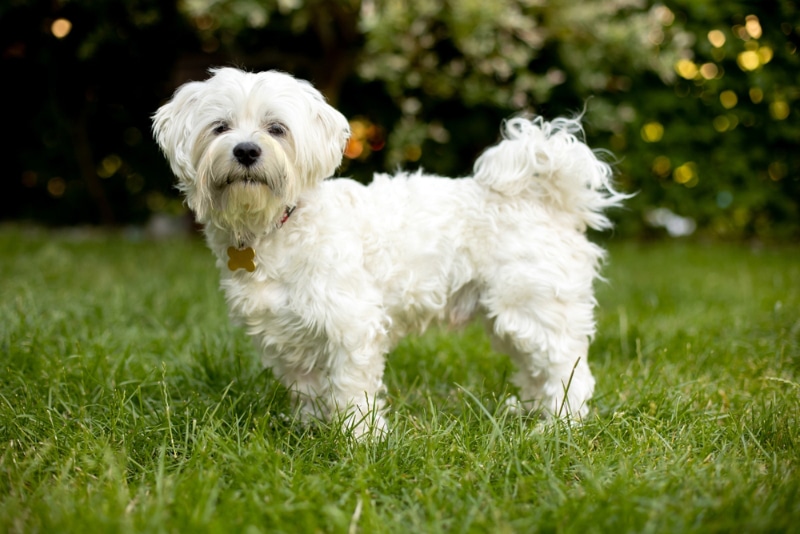
| Origin: | ~2000–1000 B.C., Malta |
| Lifespan: | 12–15 years |
| Height: | 7–9 inches |
The Maltese is one of the oldest Bichon-type dogs. The snow-white dog arose in Malta with the Phoenician empire, likely around 1500 B.C. Since then, they remained a status symbol for rulers and a fascination for breeders, allowing them to survive the rise and fall of civilization after civilization.
Despite their long history as a fashionable pet, the Maltese have all the loyalty and sense of the best watchdogs. They’re playful, clever, and adaptable, and they’re now one of the most popular breeds for allergy sufferers and non-allergy sufferers alike.
12. Puli
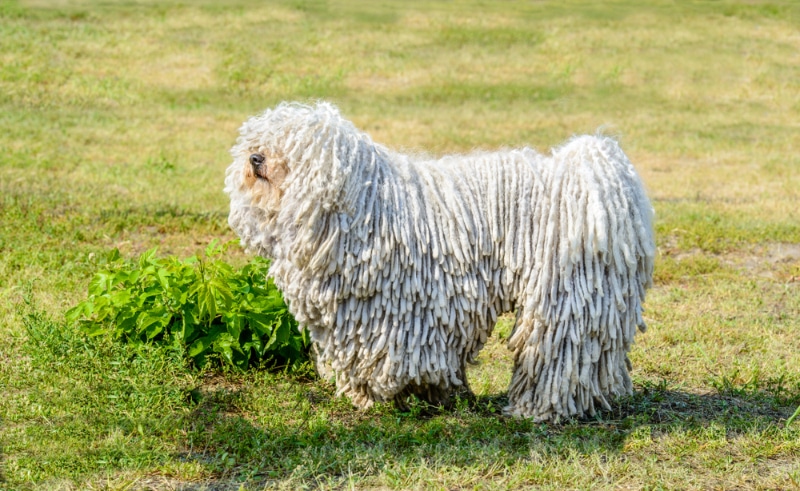
| Origin: | ~800 A.D., Hungary |
| Lifespan: | 10–15 years |
| Height: | 16–17 inches |
The Puli is a cord-haired, hypoallergenic dog. Their thick, heavy coat was crucial for the compact sheepdogs to bear the intense cold in their native Hungary.
The Puli remains among the top herding dogs today, though they’ve taken on a new role as a household pet. While they retain their incredible herding intelligence, determination, and protectiveness, they show a sillier and social side, revealing their adaptation to family life.
13. Chinese Crested
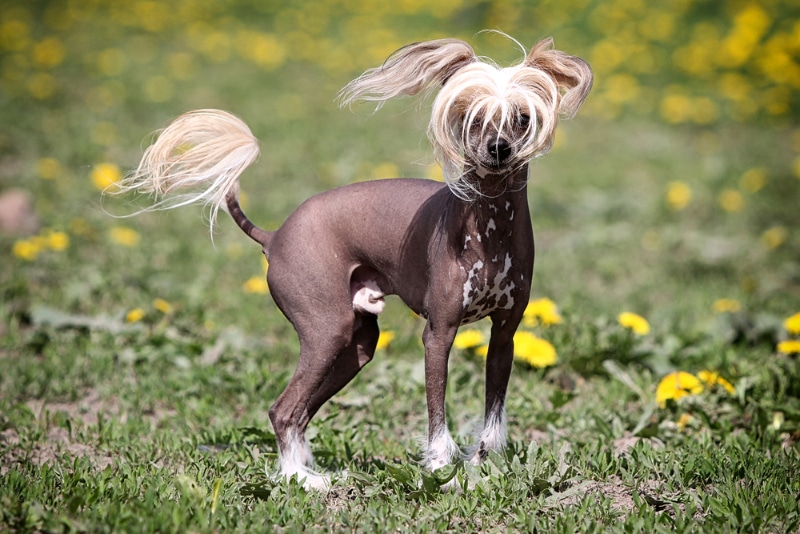
| Origin: | ~4000 B.C.–0 A.D., Africa |
| Lifespan: | 13–18 years |
| Height: | 11–13 inches |
The exact origins are unknown, but despite the name, many believe the Chinese Crested dog appeared in Africa before arriving in China with the country’s globe-trotting traders. The undersized breed became a sea-faring ratter that hunted disease-carrying vermin and became globally distributed.
The pink-spotted and hairless body accented with light puffs of hair around the ankles, head, and tail gives the Chinese Crested an unmistakable appearance. With little hair to shed and minimal odor, they help allergy sufferers to enjoy the endless cuddles and affection these dogs want to provide.
14. American Hairless Terrier
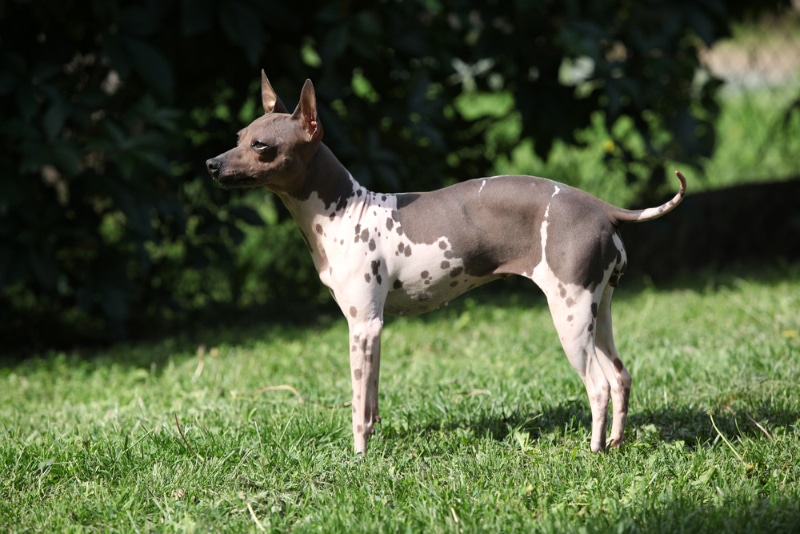
| Origin: | 1970s, America |
| Lifespan: | 14–16 years |
| Height: | 12–16 inches |
With no hair to speak of, the American Hairless Terrier is a perfect choice for someone looking for a supremely hypoallergenic dog. The American Hairless is one of the newest purebreds, originating in Louisiana in 1972.
One day, a single hairless puppy appeared among a litter of Rat Terriers and immediately captured the breeding world’s interest. Descended from Rat Terriers, the American Hairless boasts the same determination, athleticism, daring, and curiosity.
They’re trainable, alert, playful, and a wonderful addition to the family home. Though allergy-friendly and low-maintenance, the lack of a coat can promote sunburn and make them less adaptable to cold climates.
15. Basenji
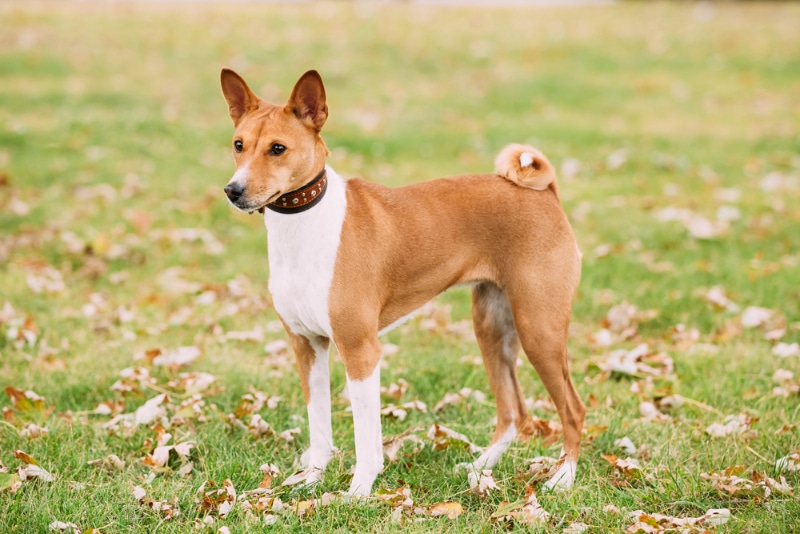
| Origin: | ~3000 B.C., Egypt |
| Lifespan: | 13–14 years |
| Height: | 16–17 inches |
As an ancient dog of African origin, which was then brought over to Egypt the Basenji is a breed unlike any other in looks and temperament. They likely inspired figures like Anubis, a god of death with a striking likeness to the pointy-eared canine.
Coming from a culture that revered cats, it may be no surprise that the Basenji is considerably feline-like. They’re meticulous groomers and are aloof and independent like cats. Due to their temperament, we recommend only experienced dog owners getting this breed. Their short, low shedding coat and strict hygiene mean that most people consider them to be hypoallergenic.
Although they don’t purr or meow, Basenjis don’t bark like a typical dog. Instead, their unique larynx only allows an entertaining range of growls, yowls, and yodels.
16. Irish Water Spaniel
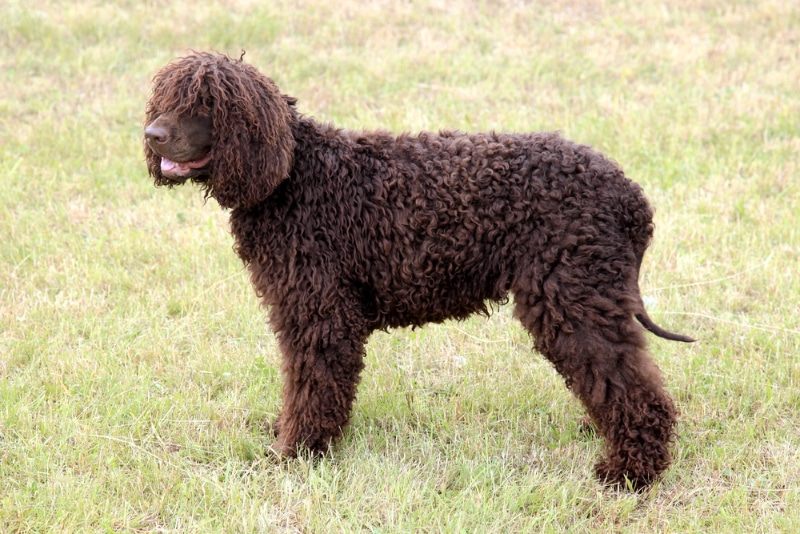
| Origin: | ~1000 AD |
| Lifespan: | 12–13 years |
| Height: | 21–24 inches |
The Irish Water Spaniel has a curly coat and was primarily a water retriever. Developed in the 1830s, with ancestors that were water retrievers in Southern Ireland for quite some time before that.
From their one-of-a-kind rat tail to their bold, water-loving personality, the Irish Water Spaniels distinguish themselves in countless ways. Unlike many Spaniels, these dogs sport a notable keenness and independence.
When given the activity and training they deserve, they provide a generous supply of affection, playfulness, and a working drive to delight owners of all kinds.
17. Cesky Terrier
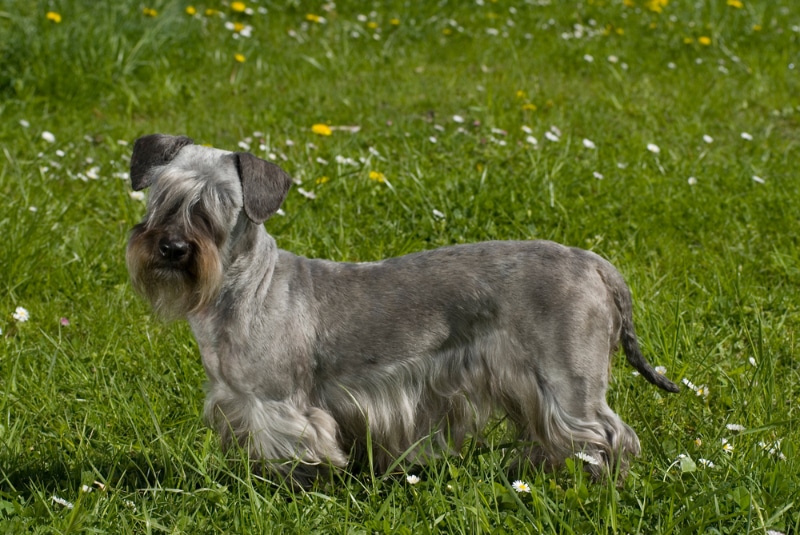
| Origin: | 1940s, Czechoslovakia |
| Lifespan: | 12–15 years |
| Height: | 10–13 inches |
One of the least popular Terriers is also one of the finest representatives of their class. The allergy-friendly Cesky Terrier, a cross between the Scottish Terrier and Sealyham Terrier, first appeared in the 1940s. Unlike some dogs on the list, they do require some grooming, and shed a little.
The breed’s architect, Frantisek Horak, set out to refine an ideal hunting Terrier and found resounding success in his adorable and beautifully mannered creation.
Cesky Terriers are as spirited, intelligent, and courageous as the next Terrier but differentiate themselves in temperament. They’re biddable, friendly, and relaxed. As the Czech Republic’s national dog, the Cesky Terrier is a marvelous companion for anyone who can find one.
18. Miniature Schnauzer
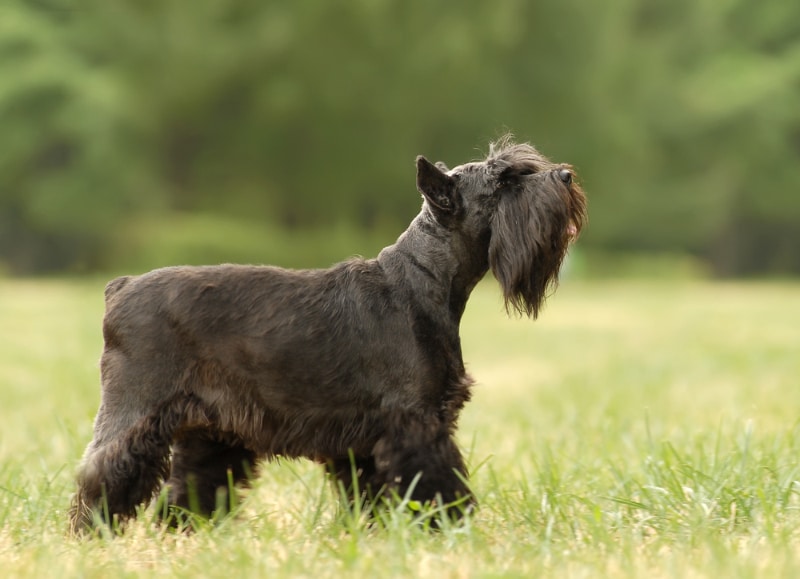
| Origin: | 1800s, Germany |
| Lifespan: | 12–15 years |
| Height: | 12–14 inches |
The Miniature Schnauzer is a German breed that earned distinction in the late 1800s. They were initially farm dogs bred for ratting, likely through combinations of Standard Schnauzers and Affenpinschers, which is another allergy-friendly breed.
While the Standard and Giant Schnauzers are equally hypoallergenic, Miniatures are arguably the most adaptable due to their hardiness and friendly nature. The bright, trainable dogs excel in high-energy sports.
With a high prey drive and eagerness for action, Miniature Schnauzers make an excellent fit for fun activities like barn hunt, earth dog, and agility trials.
19. Barbet
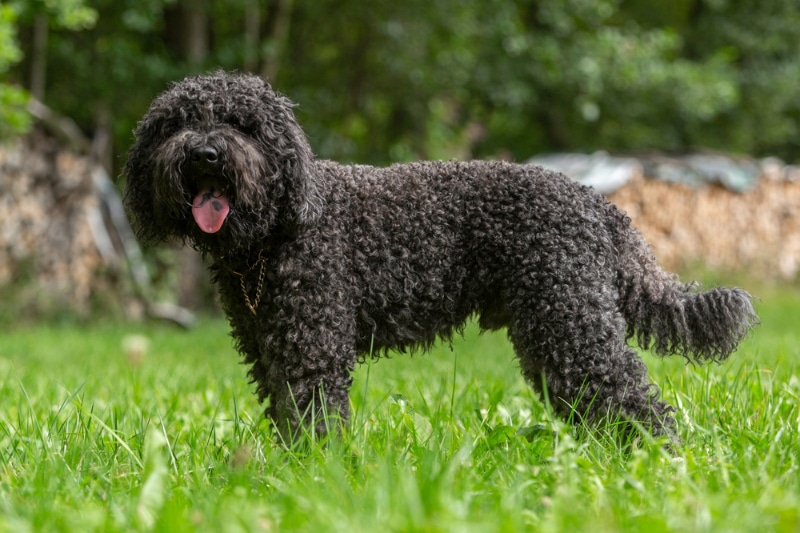
| Origin: | ~1500s, France |
| Lifespan: | 12–14 years |
| Height: | 19–24.5 inches |
The curly and wavy fluff that makes a Barbet hypoallergenic also makes them high-maintenance, but you might forgive that when you experience their playful and sweet personalities.
Also called the French Water Dog, the Barbet was originally a water retriever. They’re trainable, obedient, and loyal, and they were popular among all social classes. While the dogs are rare today, lucky owners appreciate Barbets for their intelligence and friendly, affectionate temperaments that endear them to anyone they meet.
20. Scottish Terrier
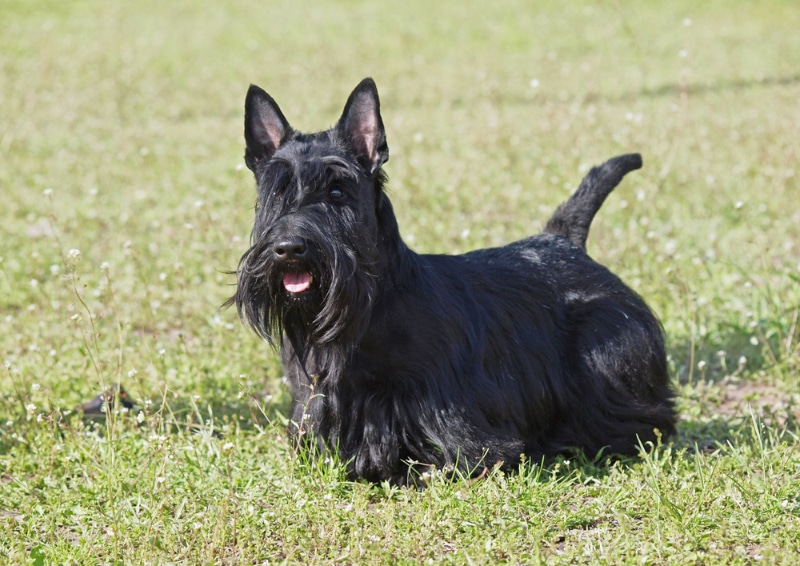
| Origin: | 1800s, Scotland |
| Lifespan: | 12 years |
| Height: | 10 inches |
The modern Scottish Terrier took shape in the 1870s and was developed from the Scotch Terriers of varying types that worked as vermin exterminators for hundreds of years. Originally called the Aberdeen Terrier, the Scottish Terrier first appeared in stud books in the late1800’s.
As a typical terrier, the Scottie is independent, tough, and confident in their compact stature. They love digging and have a high prey drive, and they require plenty of exercise and enrichment to manage.
Scottish Terriers can present training and socialization troubles, but their dignified air and effortless charm easily offset almost any challenge.
21. Bedlington Terrier
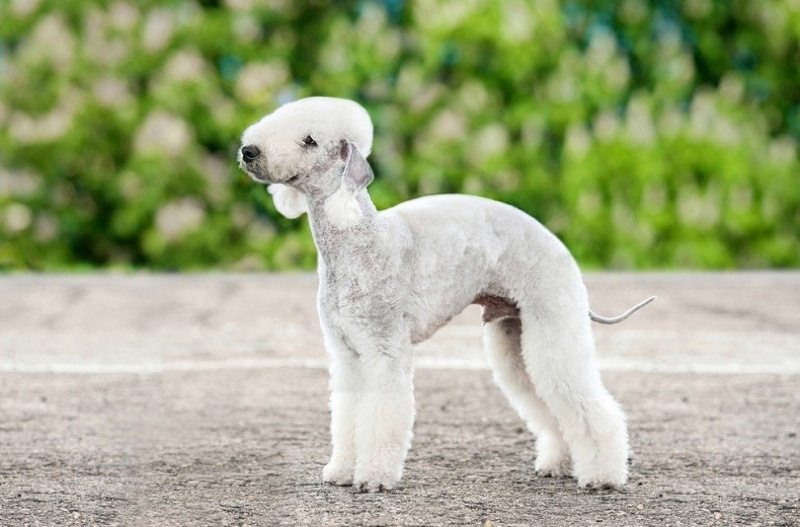
| Origin: | 1800s, England |
| Lifespan: | 11–16 years |
| Height: | 15–17.5 inches |
The lamb-coated Bedlington Terrier marries several breeds to give them one-of-a-kind looks. Originally favored by working-class miners and nail manufacturers, the Bedlington had speed, smarts, and tenacity to make them excel in vermin-killing and dogfighting.
Today’s Bedlington Terriers have softened a bit, but they’re still independent and tough, like lions in sheep’s clothing. While they’re aloof with strangers and other animals, families still adore them for their affectionate and good-natured temperaments.
22. Löwchen
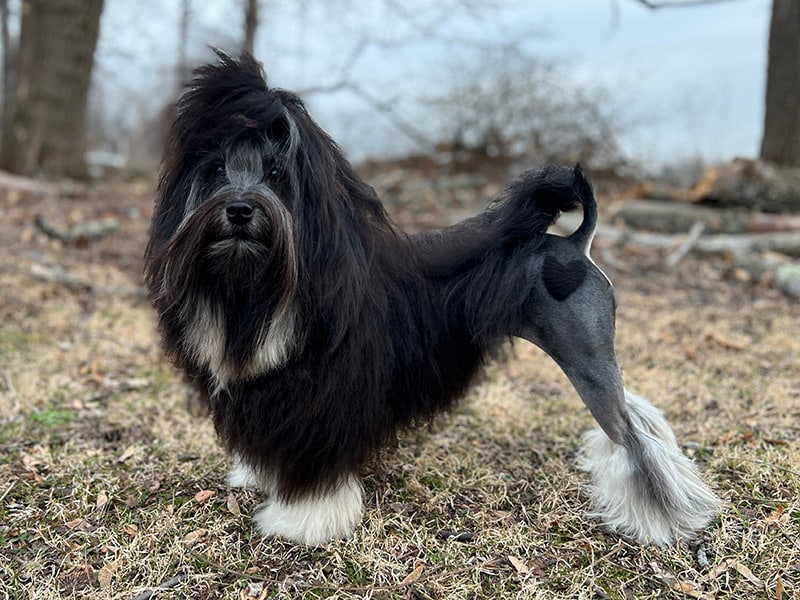
| Origin: | ~1400s, Germany |
| Lifespan: | 13–15 years |
| Height: | 12–14 inches |
The exact birthplace and date are up for debate, but the Löwchen’s desirability has never been in doubt. Known as the little lion dog, these popular pups look the part due to their unique mane defining the hypoallergenic coat. With their big bark and loyal character, they’re as courageous as the name would suggest.
Sadly, the Löwchen is a rare breed today. They’re full of affection and upbeat energy, and they have much to offer any owner fortunate enough to find one.

Conclusion
Although no dog is 100% hypoallergenic, several breeds are gentle enough to make ownership possible for some pet-loving allergy sufferers. After evaluating your home, lifestyle, and your own reaction to the breed, you can choose the perfect fit for your family among these low-shedding dog breeds.
Featured Image Credit: George Trumpeter, Shutterstock
Contents
- How Are Hypoallergenic Dog Breeds Classified?
- The 22 Hypoallergenic Dog Breeds
- 1. Poodle
- 2. Afghan Hound
- 3. Airedale Terrier
- 4. Portuguese Water Dog
- 5. Bergamasco
- 6. Kerry Blue Terrier
- 7. Lagotto Romagnolo
- 8. Brussels Griffon (Wire-Haired)
- 9. Coton de Tulear
- 10. Lhasa Apso
- 11. Maltese
- 12. Puli
- 13. Chinese Crested
- 14. American Hairless Terrier
- 15. Basenji
- 16. Irish Water Spaniel
- 17. Cesky Terrier
- 18. Miniature Schnauzer
- 19. Barbet
- 20. Scottish Terrier
- 21. Bedlington Terrier
- 22. Löwchen
- Conclusion

